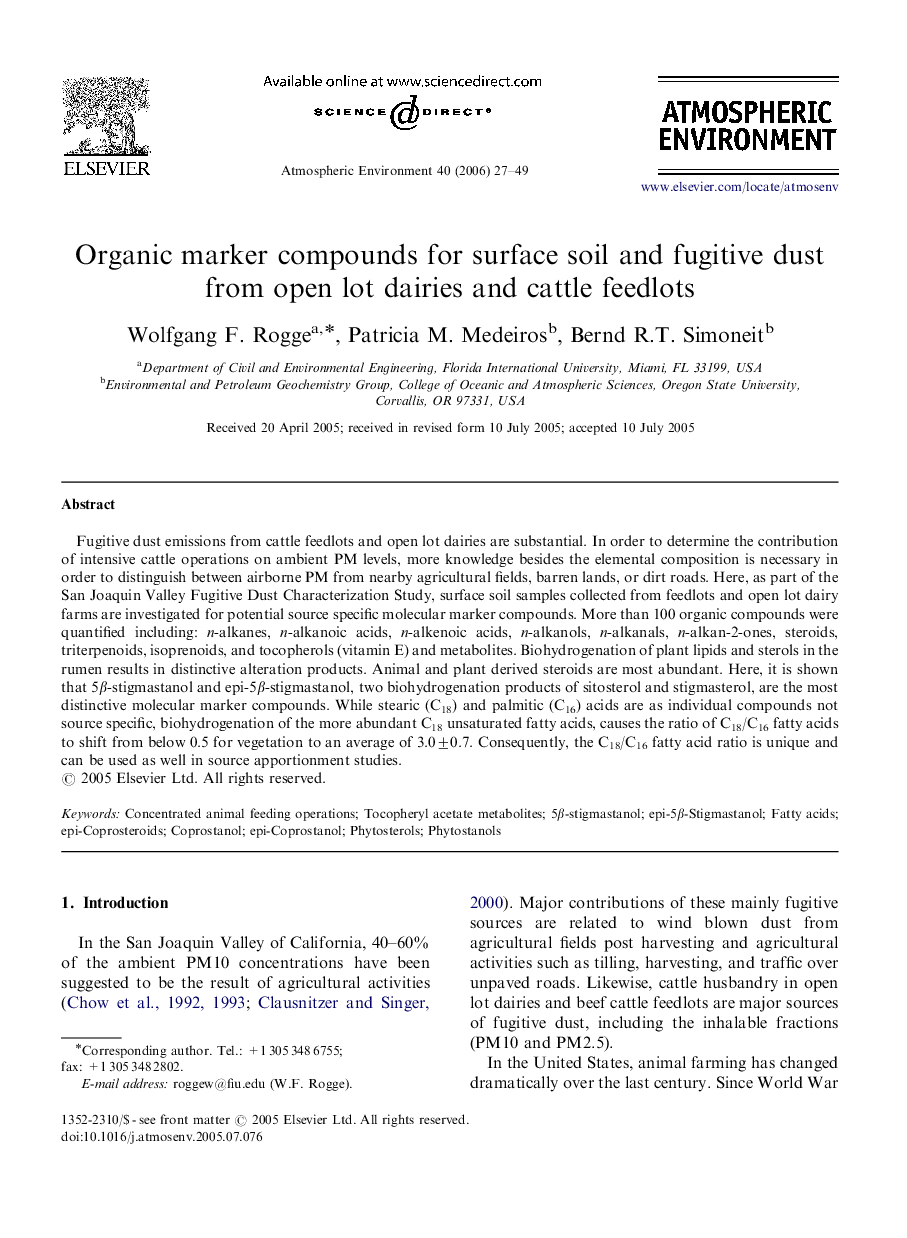| Article ID | Journal | Published Year | Pages | File Type |
|---|---|---|---|---|
| 4443802 | Atmospheric Environment | 2006 | 23 Pages |
Fugitive dust emissions from cattle feedlots and open lot dairies are substantial. In order to determine the contribution of intensive cattle operations on ambient PM levels, more knowledge besides the elemental composition is necessary in order to distinguish between airborne PM from nearby agricultural fields, barren lands, or dirt roads. Here, as part of the San Joaquin Valley Fugitive Dust Characterization Study, surface soil samples collected from feedlots and open lot dairy farms are investigated for potential source specific molecular marker compounds. More than 100 organic compounds were quantified including: n-alkanes, n-alkanoic acids, n-alkenoic acids, n-alkanols, n-alkanals, n-alkan-2-ones, steroids, triterpenoids, isoprenoids, and tocopherols (vitamin E) and metabolites. Biohydrogenation of plant lipids and sterols in the rumen results in distinctive alteration products. Animal and plant derived steroids are most abundant. Here, it is shown that 5β-stigmastanol and epi-5β-stigmastanol, two biohydrogenation products of sitosterol and stigmasterol, are the most distinctive molecular marker compounds. While stearic (C18) and palmitic (C16) acids are as individual compounds not source specific, biohydrogenation of the more abundant C18 unsaturated fatty acids, causes the ratio of C18/C16 fatty acids to shift from below 0.5 for vegetation to an average of 3.0±0.7. Consequently, the C18/C16 fatty acid ratio is unique and can be used as well in source apportionment studies.
